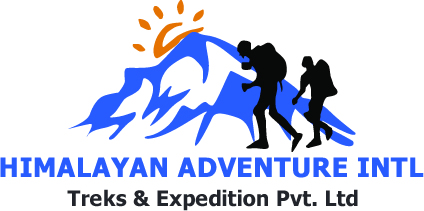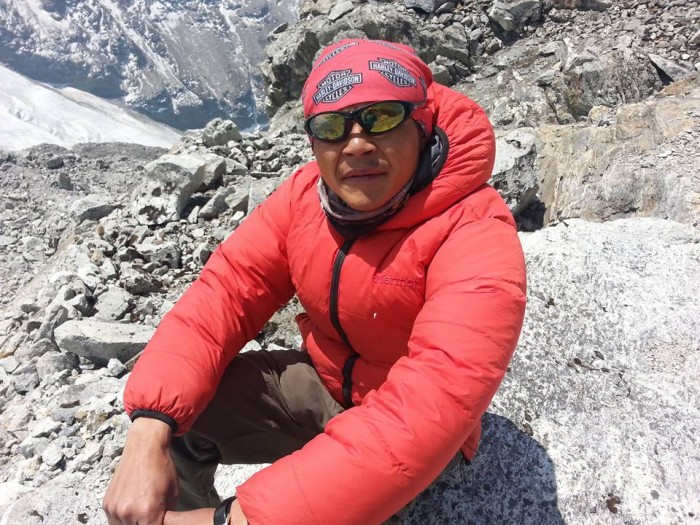The Manaslu Expedition offers seasoned climbers a thrilling opportunity to summit the world’s eighth-highest mountain, standing tall at 8,163 meters (26,781 feet) above sea level. Known as the “Mountain of the Spirit,” Manaslu lies in Nepal's Gorkha District and remains a quieter yet captivating alternative to Everest. With Himalayan Adventure International Treks, climbers are promised expert guidance, immersive cultural experiences, and a high level of safety and organization.
In this detailed guide, we’ll explore everything you need to know about the Manaslu Expedition — from its summit cost and permit fees to comparisons with Everest, as well as the mountain's death rate. We’ll also briefly touch on the cost structures of other major expeditions like Cho Oyu, Baruntse, Annapurna, and Makalu, and help you assess the best option for your mountaineering goals.
Introduction to Mount Manaslu
Mount Manaslu, the “Spirit Mountain,” is revered in Buddhist culture and is located in the restricted Manaslu Conservation Area of western Nepal. Since its first ascent in 1956 by a Japanese expedition, Manaslu has attracted climbers seeking an 8000-meter experience that is both technically challenging and less crowded than Everest.
Why Choose Manaslu?
-
Less Crowded: Compared to Everest or Annapurna, Manaslu is quieter and more pristine.
-
Authentic Culture: The trail to base camp passes through Tibetan-influenced villages, monasteries, and terraced fields.
-
Expedition Style: Offers climbers the chance to truly test themselves in high-altitude mountaineering, with glacier travel and technical climbing on steep slopes.
Manaslu Summit Cost: What to Expect in 2025–2026
The Manaslu summit cost varies depending on services, team size, logistics, and guide experience. For a full-service expedition with Himalayan Adventure International Treks, the cost ranges from $11,000 to $18,000 per person.
What’s Included:
-
Professional climbing Sherpas and guides
-
Logistics, oxygen cylinders, and base camp infrastructure
-
Transport to and from Kathmandu
-
Hotel accommodation pre- and post-expedition
-
Meals, tents, and communication support on the mountain
Optional extras like helicopter evacuation insurance, extra oxygen, or private guiding increase the cost.
Manaslu Permit Cost Breakdown
Wondering, "How much does it cost to get a Manaslu permit?" Here’s the answer:
| Permit Type |
Cost (USD) |
| Manaslu Climbing Permit |
$1,800 – $2,000 |
| Manaslu Conservation Area Permit (MCAP) |
$30 |
| Annapurna Conservation Area Permit (ACAP) |
$30 |
| Restricted Area Permit (RAP) |
$100 (Sept–Nov) |
The costs can change slightly based on the season and group size, but Himalayan Adventure International Treks handles all permit arrangements efficiently.
Manaslu Death Rate and Risk Factor
What is the death rate of Mount Manaslu? Historically, the Manaslu death rate has hovered around 6%, but this figure has improved drastically in recent years due to better weather forecasting, route fixing, and rescue options.
While it's still riskier than trekking peaks like Mera or Island Peak, it is considered safer than Annapurna I, which holds the highest fatality rate among 8000ers.
Comparison Table
| Mountain |
Approx. Death Rate |
| Manaslu |
~6% (historic) |
| Annapurna I |
~30% |
| Everest |
~3-4% |
| Cho Oyu |
<1% |
Is Manaslu Harder Than Everest?
This is a frequently asked question: "Is Manaslu harder than Everest?" The answer depends on what you mean by "harder."
-
Technical Difficulty: Manaslu involves more crevasse navigation and avalanche-prone slopes, making it technically more challenging than Everest’s South Col route.
-
Altitude Challenge: Everest is significantly higher at 8,848 meters, so the altitude and exposure are greater.
-
Crowd Factor: Everest’s popularity means more logistical support. Manaslu is less commercialized, requiring climbers to be more self-reliant.
So, Manaslu can be harder in terms of terrain, but Everest presents more challenges in terms of altitude and exposure duration.
How Much Does the Manaslu Trek Cost?
For trekkers not attempting the summit but still looking to experience the region, the Manaslu Circuit Trek offers an epic alternative. So, how much does Manaslu trek cost?
-
Trek Duration: 14–18 days
-
Cost: $1,100 – $1,300 USD, including permits, guide, porter, transportation, and meals.
This trek offers a spectacular experience, including the Larke La Pass at 5,106m, ancient monasteries, and dramatic landscapes.
Cho Oyu, Baruntse, Annapurna, and Makalu Expedition Costs
If you're considering other expeditions, here’s how they stack up:
Cho Oyu Expedition Cost
-
Elevation: 8,188 meters
-
Cost: $16,000 – $25,000 USD
-
Why Choose: Considered one of the “easiest” 8000m peaks, ideal for training before Everest.
Baruntse Expedition Cost
-
Elevation: 7,129 meters
-
Cost: $8,000 – $11,000 USD
-
Why Choose: Good prep for Everest and other 8000ers, with technical sections and steep snow climbs.
Annapurna Expedition Cost (Annapurna I)
-
Elevation: 8,091 meters
-
Cost: $18,000 – $25,000 USD
-
Why Choose: For experienced climbers only; has one of the highest fatality rates in mountaineering.
Makalu Expedition
-
Elevation: 8,485 meters
-
Cost: $20,000 – $30,000 USD
-
Why Choose: One of the most difficult 8000ers, very remote and technical.
Everest Expedition 2026: The Ultimate Goal
Many climbers use Manaslu as a training peak for Everest Expedition 2026. Everest’s South Col route remains the most popular, but it also demands the most preparation, with a summit cost of $35,000 to $55,000 USD, depending on whether you're part of a group or going privately.
Why Train on Manaslu for Everest?
-
Learn to handle oxygen systems
-
Develop glacier travel techniques
-
Get comfortable with high-altitude living
-
Gain confidence on a less crowded mountain
Itinerary for Manaslu Expedition with Himalayan Adventure International Treks
Day 1–3: Arrival in Kathmandu, gear checks, permits
Day 4–10: Trekking to Manaslu Base Camp via Soti Khola, Sama Gaon
Day 11–35: Acclimatization and summit push (including Camp 1–4 rotations)
Day 36–30: Return trek and drive to Kathmandu
Day 41: Departure
This flexible itinerary allows for acclimatization, contingency days for weather, and multiple summit windows.
Why Choose Himalayan Adventure International Treks?
As a reputable and government-licensed expedition company, Himalayan Adventure International Treks provides:
-
Certified IFMGA/UIAGM mountain guides
-
Customizable logistics and base camp services
-
Satellite communications and real-time weather updates
-
Ethical treatment of porters and staff
-
Strong safety protocols and risk management
With over a decade of experience organizing Himalayan expeditions, our team ensures you're supported from Kathmandu to the summit and back.
Testimonials
"Summiting Manaslu with Himalayan Adventure Intl Treks was a life-changing experience. From start to finish, the team was professional, caring, and well-prepared. I felt safe, informed, and part of something much bigger than just a climb."
– Sarah Mitchell, USA
"Their logistics were flawless, and our guides were not only technically skilled but also great company. I’d definitely return for Everest with them!"
– Jens R., Germany
The Manaslu Expedition is ideal for mountaineers looking to challenge themselves on an 8000-meter peak that blends technicality, beauty, and culture. Whether you're using it as a stepping stone for the Everest Expedition 2026, or conquering it as a standalone achievement, Manaslu promises adventure and awe.
Ready to take the leap? Let Himalayan Adventure International Treks guide you to the top of the world’s most soulful summit.
Contact Us Today to Start Planning Your Manaslu Expedition!
📧 info@himalayanadventureintl.com
🌐 www.himalayanadventureintl.com
📞 +977-9803526139 | Kathmandu, Nepal

 Plan Your Trip Now
Plan Your Trip Now 


